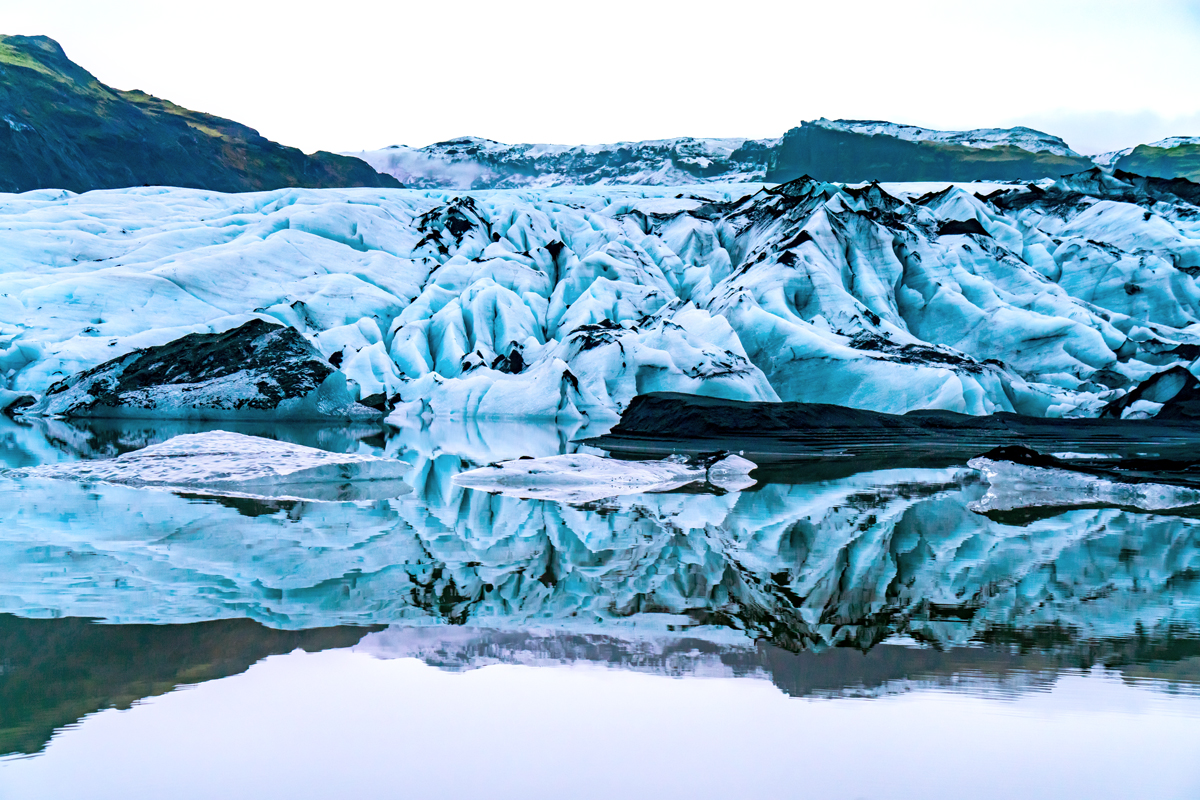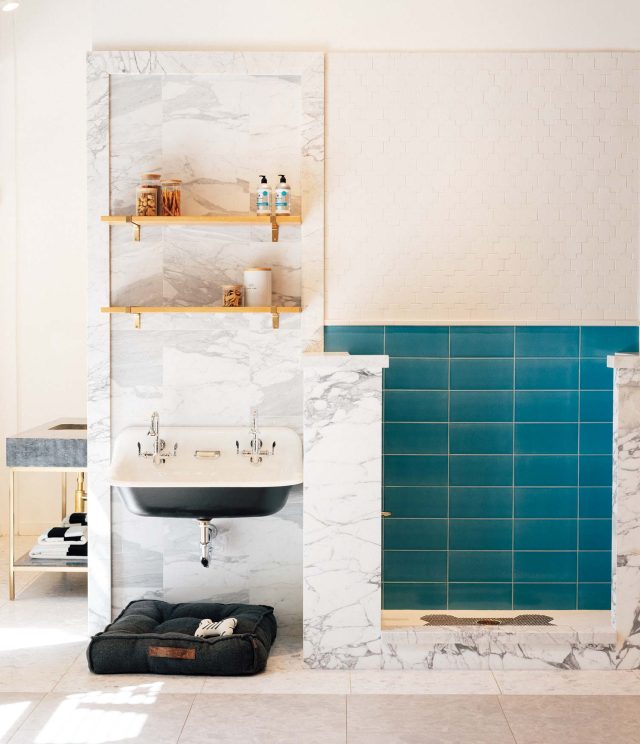
There are some things you hear about, read about, and see on screens that connect with your soul—that seem so otherworldly and unreal that you know with every inch of your being you must experience them for yourself, and, until you do, you feel a sense of longing. The Northern Lights were always my lodestone. Growing up in Cincinnati, Ohio, seeing the lights on nature shows, I couldn’t even imagine they were real—but desperately wanted them to be. And so, firmly into my adulthood, I went off to see them for myself.
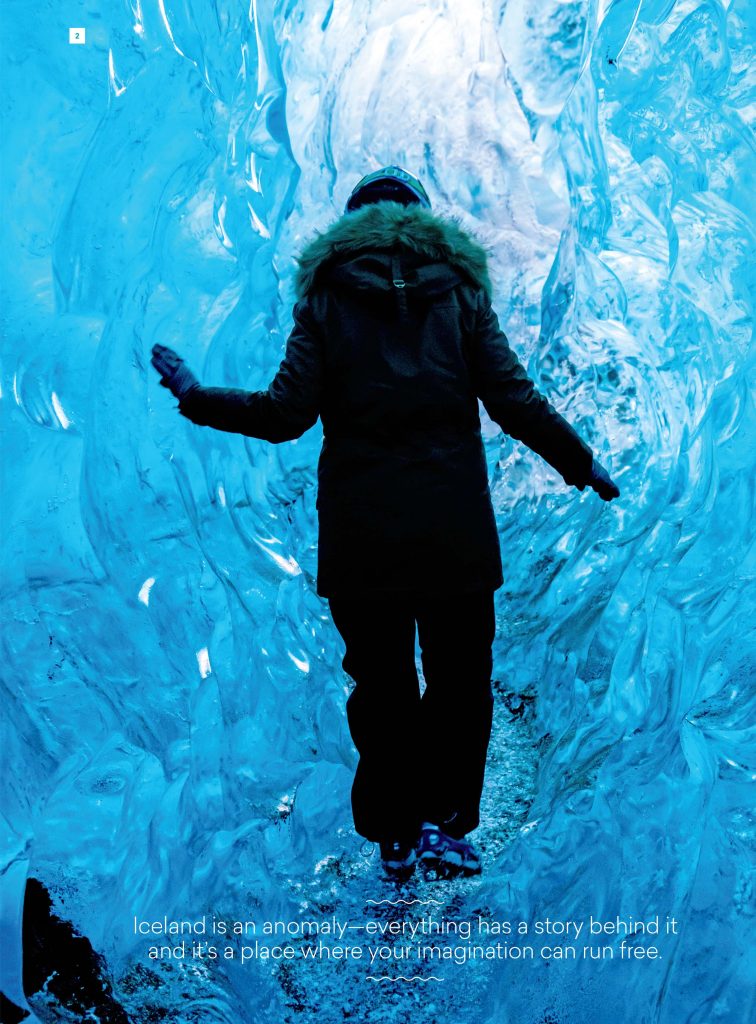
Which is how I—a person who loathes the cold, wind, and rain—found myself on a trip to Iceland in February to try to catch the Aurora Borealis. Little did I know that Iceland was as mystical and magical a natural phenomenon as I’d hoped. I’d been told that the key to a great Icelandic adventure—especially in the winter—is getting off the beaten paths of paved roads and out of Reykjavik. So, upon arrival, I immediately headed inland with Midgard Adventure tours in the backseat of a souped-up 4×4 truck. We were pointed toward the Hotel Ranga.
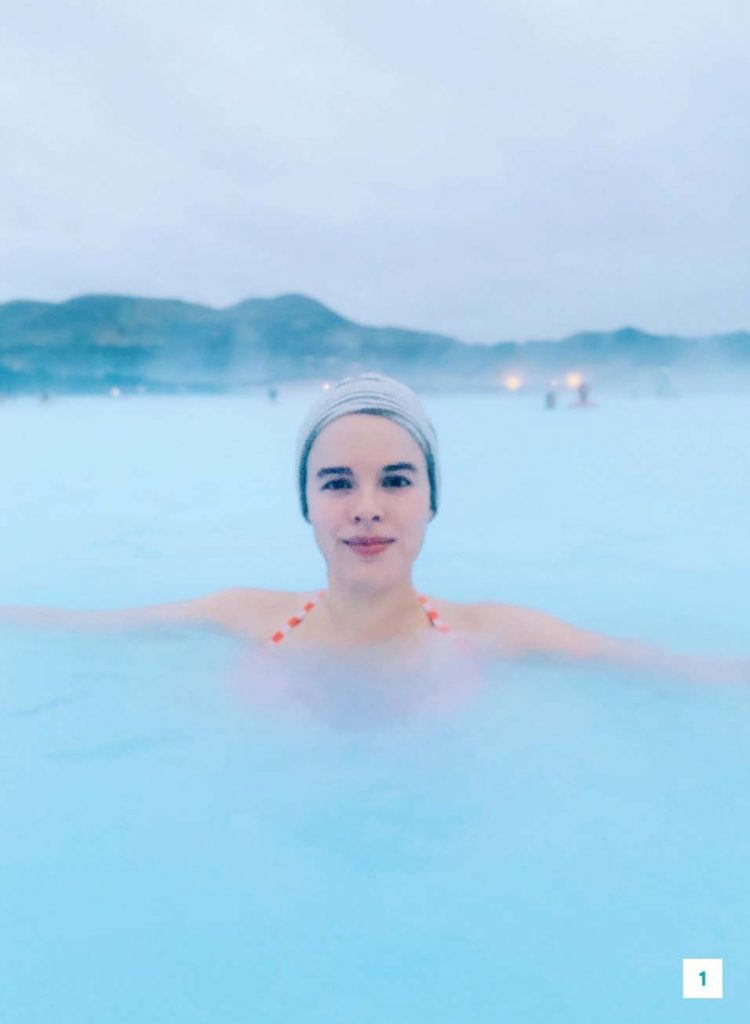
Soaking in the Blue Lagoon is said to help with ailments like psoriasis and arthritis.
Located in a remote spot on the River Ranga, about an hour drive from Reykjavík and between the small towns of Hella and Hvolsvöllur, the hotel has an outdoor observatory with two NASA grade telescopes for stargazing. Dressed snugly in a winter thermal onesie the hotel provides to all of its guests, I wandered outside in subzero temperatures for a galactic show that was right out of a manga movie. As the green swirls slowly collided with purple mists around the Milky Way, shooting stars blazed across the sky. I have never, never seen something so heart-breakingly beautiful in my life—and don’t expect to again. Well, until the next day when I entered the ethereal, blue world of Iceland’s glacier caves. Equipped with a helmet, harness, ice axe, and crampons, I spelunked down ice tubes into the caves made of million-year-old ice and wandered around azure ice tunnels made by retracting glacial rivers. It was kind of like an acid trip–in the best possible way.

The wonder came to a screeching halt later, at a late lunch in which I tried the local delicacy known as Hakarl— shark meat fermented (some – times for years) in its own waste. The only way this is palatable is if it’s washed down with the Icelandic liquor Brennivin (an Icelandic version of moonshine). The Hakarl I tried was made by the mother of my Midgard guide, Oli, who swears by the stuff.
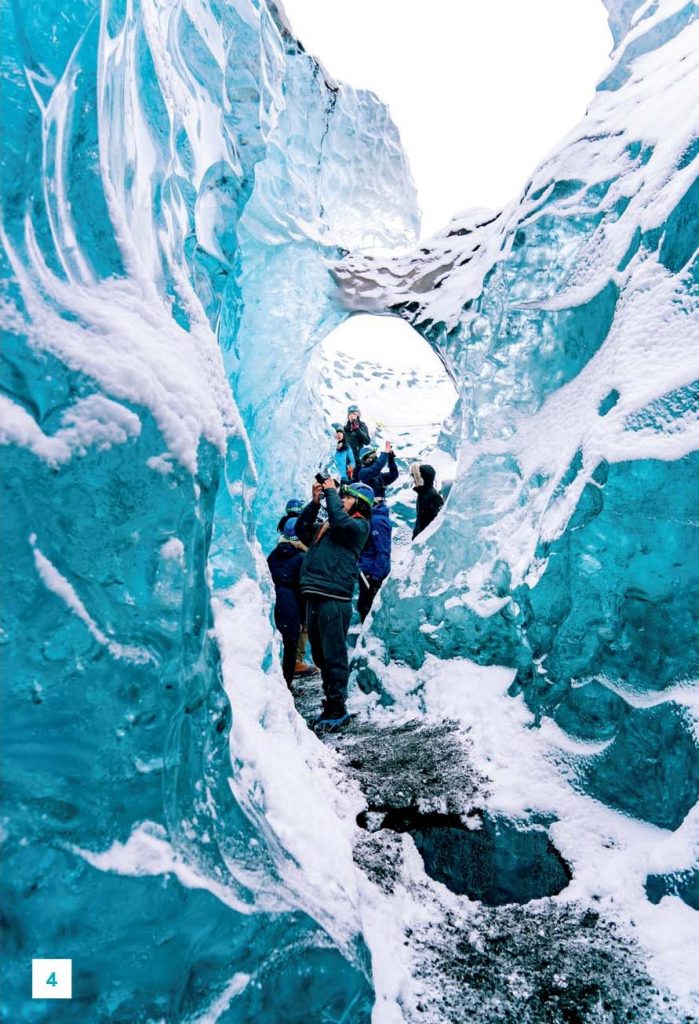
Walking through glaciers is hard work but worth it as you come across a land – scape carved solely out of ice.
In all honesty, it reeks to high heaven but the actual taste isn’t that bad. Or maybe it was just the Brennivin talking. It did serve to shore me up for the next day’s winter wonderland adventure: snowmobiling on top of the Vatnajökull glacier, the largest ice cap in Iceland and the third largest in the world, in near whiteout conditions. “It will be fiiiiine,” Midgard founder Bjorg Arnadottir says, before insisting I drive. After a quick prayer, I took off over the glacier and into white nothingness. Afterwards, snug in a cabin near the glacier as snow fell, Bjorg and Oli then introduced me to the concept of Hut Games. Because the winter in Iceland is so long and dreary, Iceland – ers had to come up with some – thing to do when you’re stuck indoors for stretches of the time. Enter Hut Games. It’s a series of strength and agility tests that include the Bottle game, in which you have to turn your entire body around a bottle while your hands never leave the bottle. Then there’s the Table Game, which involves scooting on and over a table without touching the floor. And the Mouth Game— you pick up detritus from the ground with just your mouth, and other “fun” things that test your limberness. I am not a limber woman so I sat back and listened to an Icelandic man tell tales of elves—which, apparent – ly, are real—at least in Iceland.
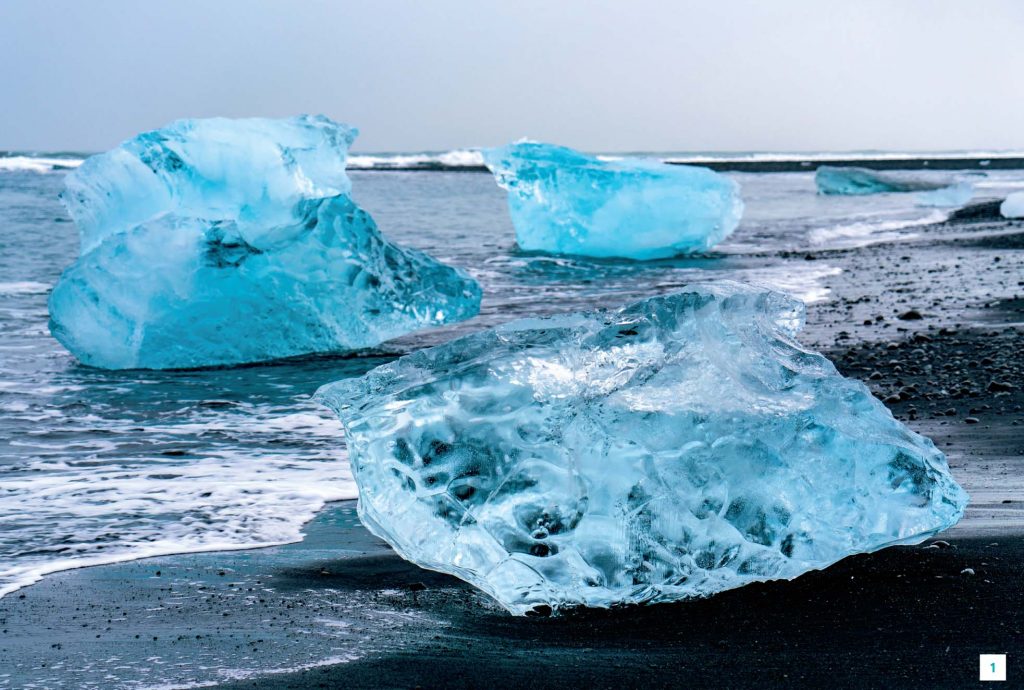
According to the locals, just outside of Iceland’s southernmost town, Vik, is Reynisfjara, a black volcanic beach. You can’t swim there— the water is close to freezing, the rip currents are Herculean, and there are deadly rogue waves— but the scenery is legendary. If the tide is out, you can clamber along the shoreline to an intri – cately sea-carved cavern—which is related (at least in tale) to the huge Reynisdrangar basalt sea stacks just off the coast. The cavern, which has a rock – like mass on top that looks like a chimney, was home to husband and wife trolls. One night, they were looking out to sea during a huge storm and saw a ship struggling, about to crash on the shore. So, being neighborly types, they went to help the ship and tried to push it back into the sea, but there was a really strong storm. They worked for hours and hours and lost track of time. Then, the sun came up. And as the first rays of sunlight hit them, the people and the ship they were touching turned to stone.
This is not an uncommon tale in Iceland. According to one study, up to 72 percent of people in Iceland believe in elves, trolls, and the huldufolk, or “hidden people”—who apparently look just like us but live in a different dimension inside rocks, which open up (for them, not us) like a Harry Potter Quidditch tent that rivals the Ritz in Paris. I’m not making this up. Elves, trolls, and other sorts of creatures apparently wander all over Iceland—hidden to most human eyes—and hiding in plain sight. But every now and then, they will come out of hiding and even save human lives. In 2010, Icelandic Parliament member Árni Johnsen nearly died in a car accident but claims he was saved by a family of elves living in a 30-ton boulder nearby. So, to thank them, he agreed to move their boulder onto his property, where they could live their lives in luxury and not off the side of a highway. True story. There is even an official Elf park, the Hellisgerði Lava Park, just outside of Reykjavik, that is overseen by Ragnhildur “Ragga” Jónsdóttir—the country’s unofficial elf spokeswoman. According to Ragga, whom I met several days later, elves don’t look like Orlando Bloom in The Lord of the Rings. His character would be more like a huldufolk— although there are several types and species of elves, who are, apparently, green.
The belief in elves (and government funded elf parks) is not the only thing that’s different about this tiny island country with just 350,000 inhabitants. Along with a penis museum, there is also a museum of witchcraft in the Western Fjords area. All inhabitants of the island are listed in a paper phonebook by their first names (it gets confusing), refuse to listen to voicemail, and in the middle of a large city like Reykjavik, parents will happily leave their babies in strollers outside while they sip a coffee inside a warm café, claiming “it toughens them up.” It’s odd—and delightful.

Over the next few days, I stopped in at the Icelandic Phallological Museum, which boasts it’s “the only museum in the world to contain a collection of phallic specimens belonging to all the various types of mammals found in a single country.” I hopped on a miniature Icelandic horse (which looks like a cross between a Shetland pony, a Clydesdale, and a ’roided out bodybuilder) and went for a (chilly) trot. I visited the Seljalandsfoss waterfalls, which can be viewed from 360 degrees—as in you can walk all the way around them. And I took a helicopter to Thorsmork (the Valley of Thor) and…played more Hut Games. After spending just one week there, I realized it’s not too hard to understand why people believe in elves and magic. Physically, it’s a crazy (in the best way possible) little island, with landscapes that just don’t make sense to the untrained eye, and fiercely independent, proud but hospitable residents. Iceland is an anomaly, everything has a story behind it…and it’s a place where your imagination can run free. Even if encased in ice.

